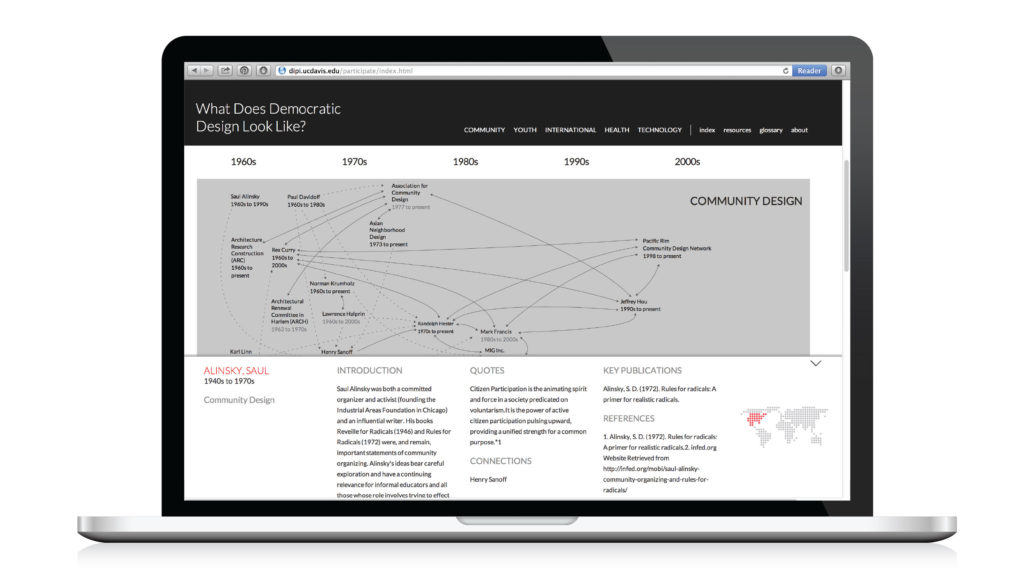evolution of participatory practices
What does democratic design look like?
Evolution of Participatory Practices: 5 Disciplines, 50 Years is a multidisciplinary effort between researchers, design practitioners, educators, and graduate students at DiPi. The project explores pivotal developments and connections in the evolution of participatory practices, beginning with the U.S. Civil Rights Act of 1964. In a participatory approach, the focus is on designing “with” all those involved, rather than “for” a specific audience.
The interactive timeline’s visualization illustrates connections between key individuals, organizations, projects, writings, and social/cultural events across five decades and disciplines—community design, youth development, international development, public health, and technology development. It reveals key relationships and the changing historical context of the work. Clicking on the names, for example, brings up additional information and resources. Other project outcomes include a downloadable poster and data sets.
The project earned an International Institute for Information Design (IIID) award and was featured in the IIID Award 2014 Exhibition traveling to seven countries: Austria, Croatia, Germany, Latvia, Liechtenstein, Taiwan, and the UK. It was also selected for inclusion in Information Everything, an international exhibition guided by the question, “How do we turn data into knowledge we can think with and use?” at Emily Carr University of Art + Design, Vancouver, Canada.




participatory practices: DiPi team
Susan Verba
Faculty, Design
Sarah Perrault
Faculty, University Writing Program
Yohei Kato
Graduate student, Community Development
Sumayyah Ahmed
Graduate student, Computer Science
Prerna Dudani
Research/design staff
participatory practices: community partners + participants
Gilad Meron
Editorial Lead, Impact Design Hub: an online resource for researchers, educators, and practitioners in public-interest architecture and design
A number of experts engaged in participatory practices who were interviewed and whose input contributed to the project
Community designers in Japan who participated in user studies

